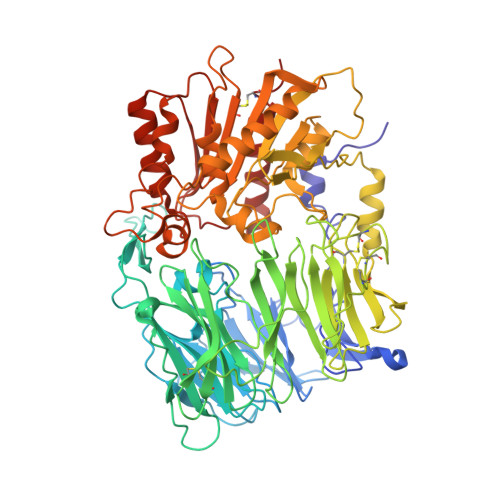Structure of a human A-type potassium channel interacting protein DPPX, a member of the dipeptidyl aminopeptidase family
Strop, P., Bankovich, A.J., Hansen, K.C., Garcia, K.C., Brunger, A.T.(2004) J Mol Biology 343: 1055-1065
- PubMed: 15476821
- DOI: https://doi.org/10.1016/j.jmb.2004.09.003
- Primary Citation of Related Structures:
1XFD - PubMed Abstract:
It has recently been reported that dipeptidyl aminopeptidase X (DPPX) interacts with the voltage-gated potassium channel Kv4 and that co-expression of DPPX together with Kv4 pore forming alpha-subunits, and potassium channel interacting proteins (KChIPs), reconstitutes properties of native A-type potassium channels in vitro. Here we report the X-ray crystal structure of the extracellular domain of human DPPX determined at 3.0A resolution. This structure reveals the potential for a surface electrostatic change based on the protonation state of histidine. Subtle changes in extracellular pH might modulate the interaction of DPPX with Kv4.2 and possibly with other proteins. We propose models of DPPX interaction with the voltage-gated potassium channel complex. The dimeric structure of DPPX is highly homologous to the related protein DPP-IV. Comparison of the active sites of DPPX and DPP-IV reveals loss of the catalytic serine residue but the presence of an additional serine near the "active" site. However, the arrangement of residues is inconsistent with that of canonical serine proteases and DPPX is unlikely to function as a protease (dipeptidyl aminopeptidase).
- Howard Hughes Medical Institute and Department of Molecular and Cellular Physiology, Stanford Synchrotron Radiation Laboratory, Stanford University, James H. Clark Center E300, 318 Campus Drive, Stanford, CA 94305, USA.
Organizational Affiliation:






















